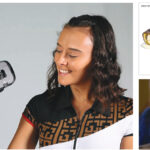Color and filters, what's the difference?
Tinted lenses (such as those in sunglasses) reduce the amount of light entering the eye. The darker the color, the less light will enter the eye. Therefore, a very dark lens can only transmit 21% of the light into the eye, and a light tint can transmit 50%-60% of the light into the eye.
Color reduces the entry of light throughout the entire spectrum and does not distinguish between waves that interfere with vision and those that are beneficial to it. Therefore, color is effective in reducing glare, but it sometimes reduces visual acuity.
Light is measured in nanometers and is made up of rays of the colors of the rainbow. Short light waves such as blue and violet and long waves such as red. Studies have shown that the short waves: ultraviolet (UVA, UVB) and blue can cause damage to the retina of the eye and vision problems if they pass through the intraocular lens into the retina.
Special filters in yellow-orange-brown tones with specific wavelengths (450 nm, 521 nm, 511 nm, 550 nm, etc.) reduce distortions, reduce light scattering and thus glare, and reduce the feeling of strain on the eyes.
The benefit of using filters is that they can block only some of the light waves, especially the harmful blue-violet waves, while allowing the rest of the light rays to pass through.
The significance of filters is even greater for people with various eye diseases. These people often suffer from glare, decreased contrast (blurred vision), and sensitivity to light.
These symptoms cannot be addressed or resolved with regular glasses in eye diseases such as RP, retinal degeneration, diabetic retinopathy, non-operable cataracts, and many other diseases, and therefore a special filter must be fitted.
In a low vision test, we will measure:
Reducing glare with filters
Increasing contrast using filters
Using filters to test light sensitivity and a sense of relaxation of the eyes.
Which filter for which eye disease?
There is no exact answer to this question. Although there are filters recommended for different diseases, some people have more than one preference. And sometimes there is a combination of several eye diseases together, such as diabetic retinopathy and cataracts or glaucoma and retinal degeneration.
Sometimes there is optic nerve atrophy that has several symptoms and one must choose which symptom to treat.
The filters address phenomena in distance vision as well as reading and near vision. They can be different for indoor and outdoor use. Some darken when adjusted outdoors to the sun.
An objective and subjective fit test must be performed by an optometrist specializing in low vision.
In order to achieve an exact match.





